With 487 bird species, the Sooner State represents a prime birdwatching territory. You can spot and take a photo of resident birds of Oklahoma year-round and thousands of migratory birds that stopover in this state twice a year. The best places for these activities are four Wildlife Refuge Centers you should visit.
- Oklahoma Birds
- Noteworthy Birds of Oklahoma
- Common Birds of Oklahoma
- Oklahoma Landscape and Birding Seasons
- Oklahoma Birding Hotspots
- Oklahoma Birds Field Guides
- Oklahoma Bird Checklist
- Specific Bird Species
Oklahoma Birds
You can see about 800 resident and migratory bird species in the US year-round. Even though 487 of them are seen in Oklahoma, only 355 regularly occur, including 181 nesting species. 83 are permanent residents.
Numerous migratory birds pass through Oklahoma twice a year, including American White Pelican and Bald Eagle. There are also numerous unique species, such as:
- Peregrine Falcons, the fastest animal in the world
- Gyrfalcon, the largest falcon species worldwide
- Ferruginous Hawk, the largest Buteo in the US
- Sharp-shinned Hawks, the tiniest hawk in Oklahoma
- Hummingbirds, the smallest bird worldwide
- Merlins, the most widespread species in Oklahoma
- Barn Owls, the most efficient hunter-by-sound bird worldwide
American Kestrels are the smallest and most numerous falcons in Oklahoma. This type is unusual since females and males look entirely different.
Bald Eagle makes the biggest nests in Oklahoma. The biggest ever found was 10 feet (3m) wide, 20 feet (6 m) tall, and over 6,000 pounds (2.7 tons) heavy.
Approximately 5 feet (1.5 m) long Whooping Crane is the tallest bird in the US. Northern Mockingbird is the loudest. This Oklahoma bird calls pleasantly, and you can hear it singing all night long.
The Scissor-tailed Flycatcher is the most economically valuable bird since it mostly consumes harmful insect species. Interestingly, it collects human-produced materials like cigarette filters, cloth, and paper to make the nest.
Oklahoma adopted Wild Turkey as an official state game bird in 1990.
Noteworthy Birds of Oklahoma
Once you come to Oklahoma, you will want to keep your eyes on the sky since there are numerous beautiful bird species, including rare and unique ones.
Whooping Crane (Grus americana)
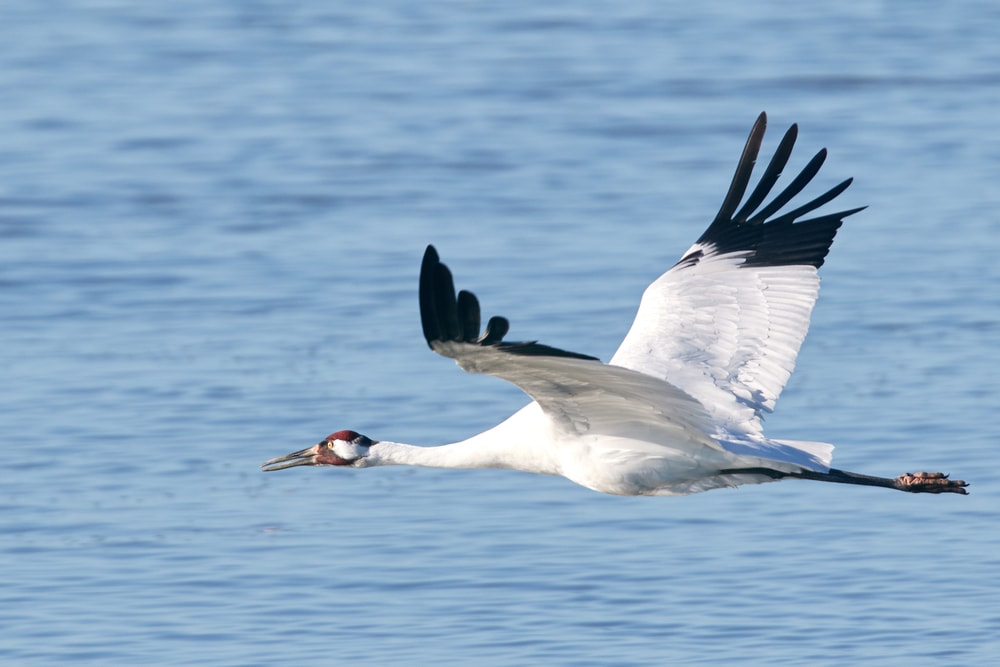
Whooping Crane is the tallest bird in North America. This rare bird lands in central Oklahoma, preferably at the Salt Plains National Wildlife Refuge and reservoirs in the metropolitan area. Thanks to its wingspan of 90 inches (2.3 m), it flies over shallow wetlands, wet prairies, and marshes and enjoys spending time near water.
Scissor-tailed Flycatcher (Muscivora forficata)
The Scissor-tailed Flycatcher is Oklahoma State Bird from May 1951 and is protected by law. It nests in this state, and you can see flocks of about 1,000 birds forming in late summer before migration to Mexico. Most birders spend hours waiting to see males performing its striking sky dance.
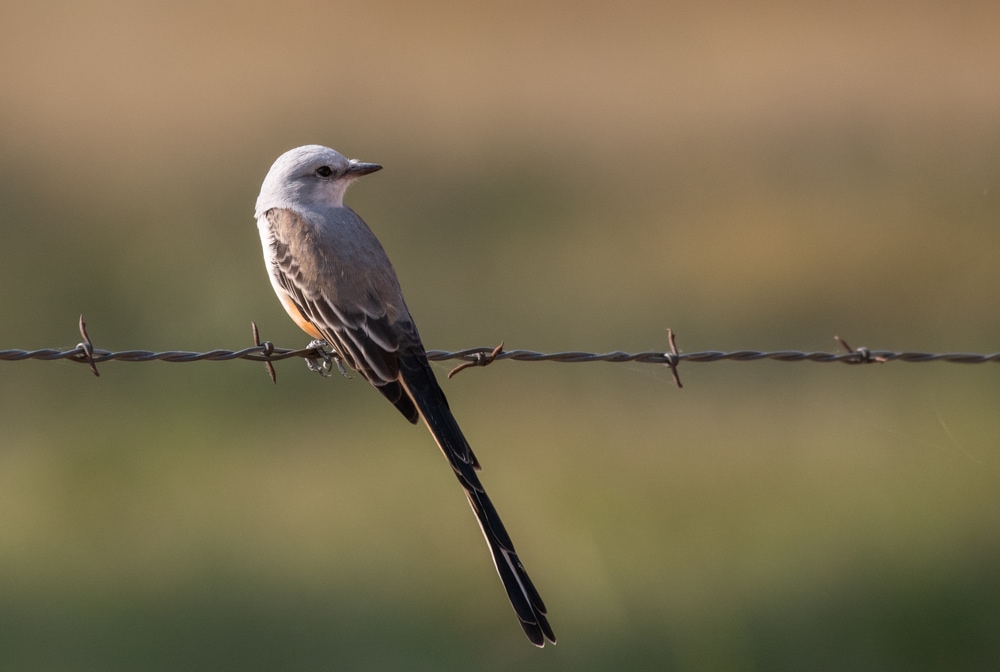
Bobolink (Dolichonyx oryzivorus)
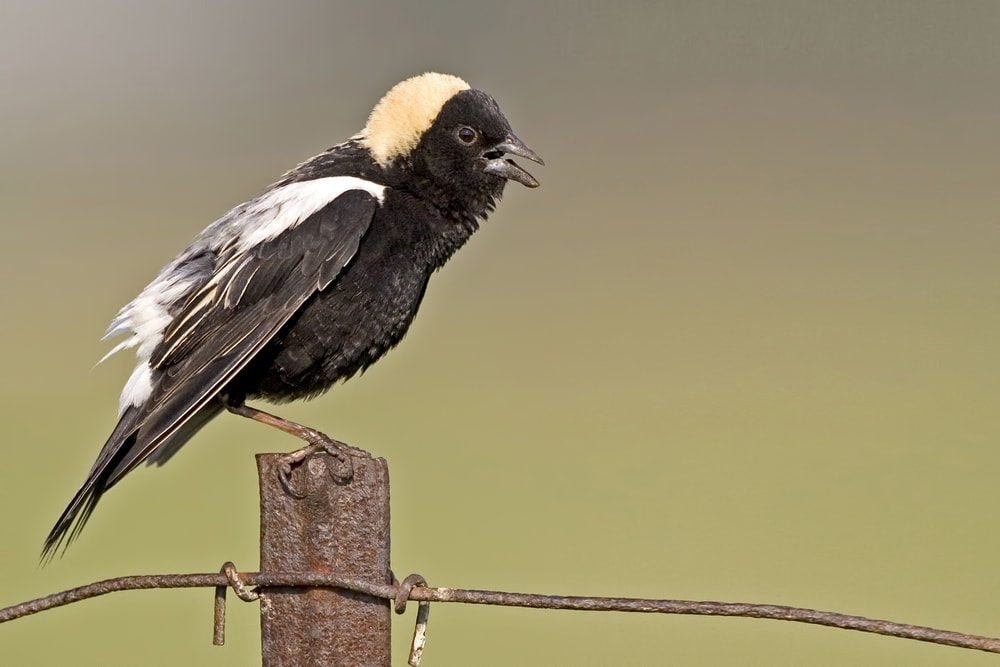
Bobolinks, meaning rice eater, is an unbelievably striking passerine and one of the most interesting species among songbirds in Oklahoma. You can see males flying low over hayfields, prairies, and damp meadows in a typical helicopter-like flight while singing its bubbly song. This migrant makes a round-trip of at least 12,500 miles (20,000 km) each autumn.
Bald Eagle (Haliaeetus leucocephalus)
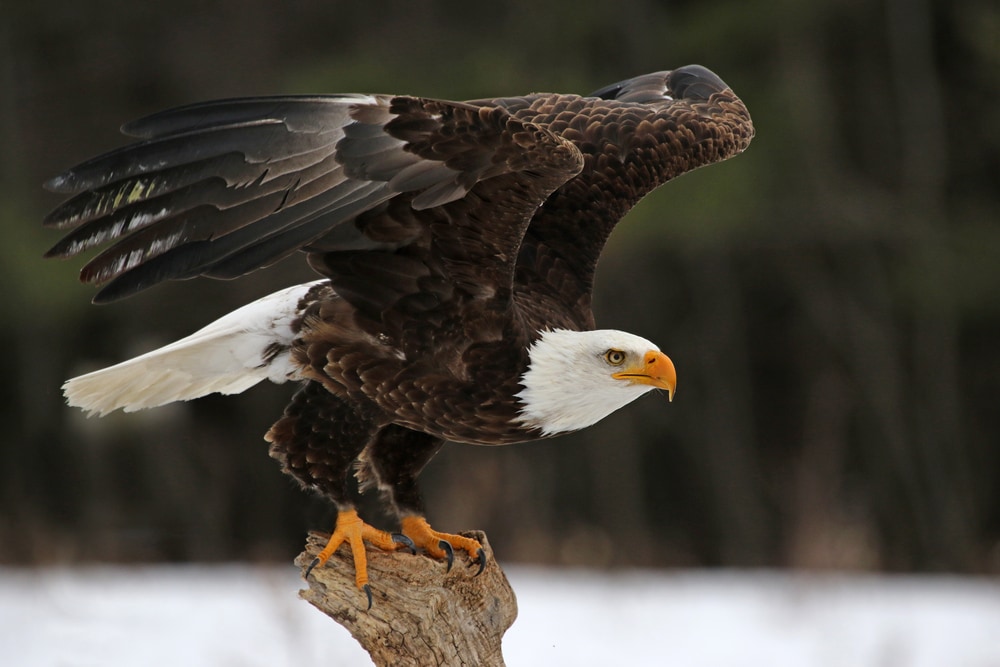
Thanks to numerous rivers and lakes and mild winters, Oklahoma is among the top ten Bald Eagles wintering areas in the US. After the successful Restoration Program, over 60 of these magnificent birds nest in this state. At least 800 to 1,500 find their sanctuary here during severe winters in the north.
Glossy Ibis (Plegadis falcinellus)
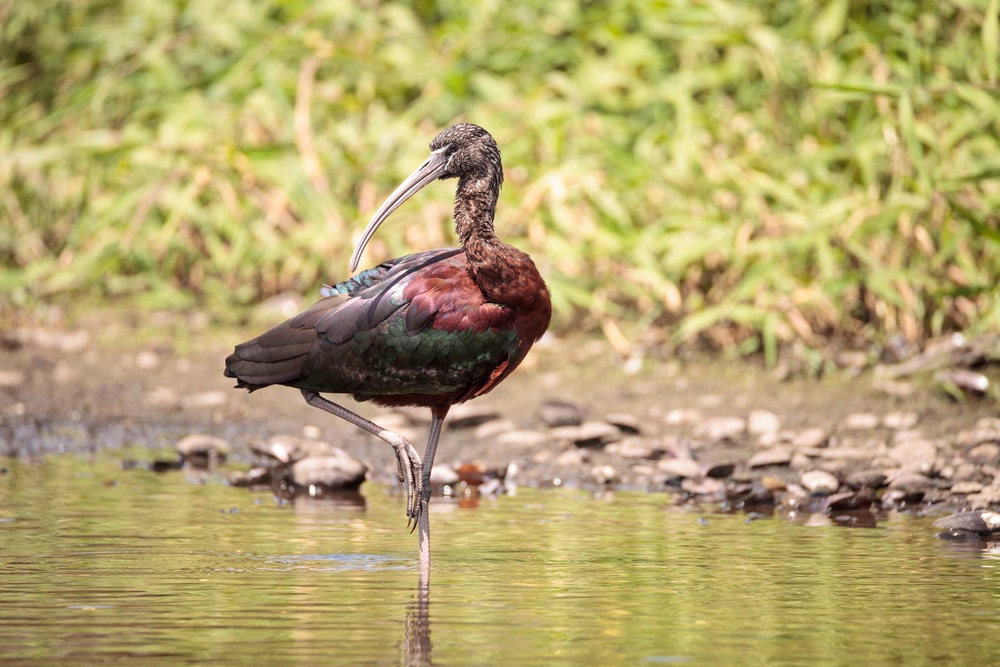
You will rarely spot this bird in Oklahoma. If it accidentally passes by, you will most likely see it in shallow ponds, swamps, and marsh waters. It usually nests in low shrubs that grow in the swamp. Single birds sometimes wander while their flocks migrate from the north winter habitats.
Roseate Spoonbill (Platalea ajaja)
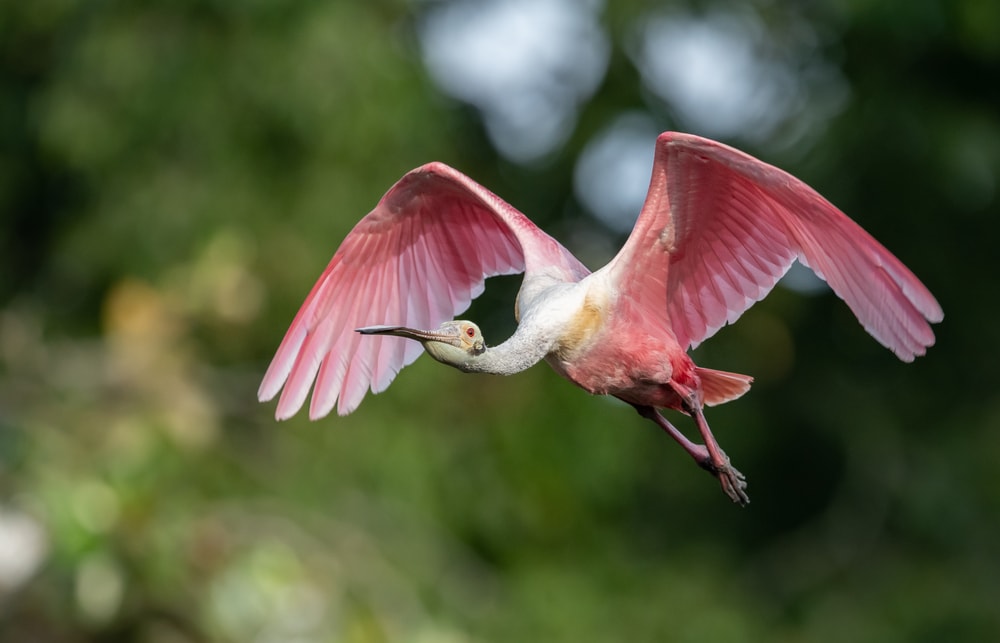
Each breeder enjoys watching these rare and unique pink wading birds and their ritual courtship displays. They keep the same mates for an entire breeding season while nesting in saltwater wetlands. After spending winters in Central and South America, these birds form small flocks that come to Oklahoma in summer.
Lesser Prairie-Chicken (Tympanuchus pallidicinctus)
Lesser Prairie-Chicken is critically imperiled, but you can still find this resident species year-round in western Oklahoma. Birders enjoy their dramatic bird courtship display, but its existence depends on the prairie that disappears. It is estimated that its distribution is reduced by 85%, and the species number fewer than 38,000 birds these days.
Red-tailed Hawk (Buteo jamaicensis)
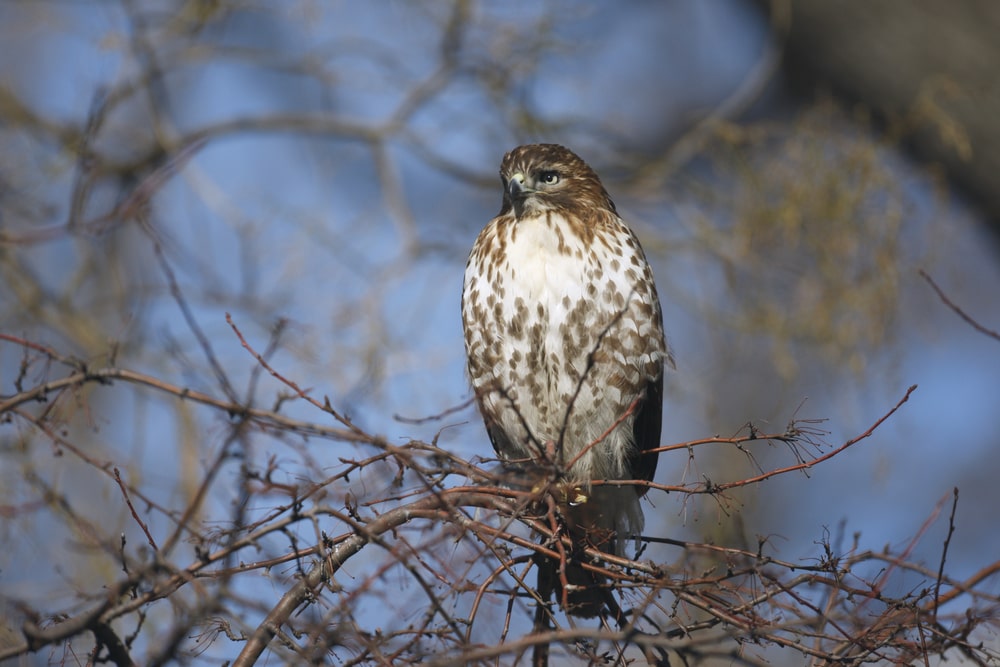
Red-tailed Hawks are widespread Oklahoma wild birds and most frequently live in the central state plains year-round. You can see them breeding in every county. These birds have an unusual habit of nesting that includes bringing a green bough to the nests daily while the hatchlings are young. They are probably food sources and provide shadow.
Killdeer (Charadrius vociferus)
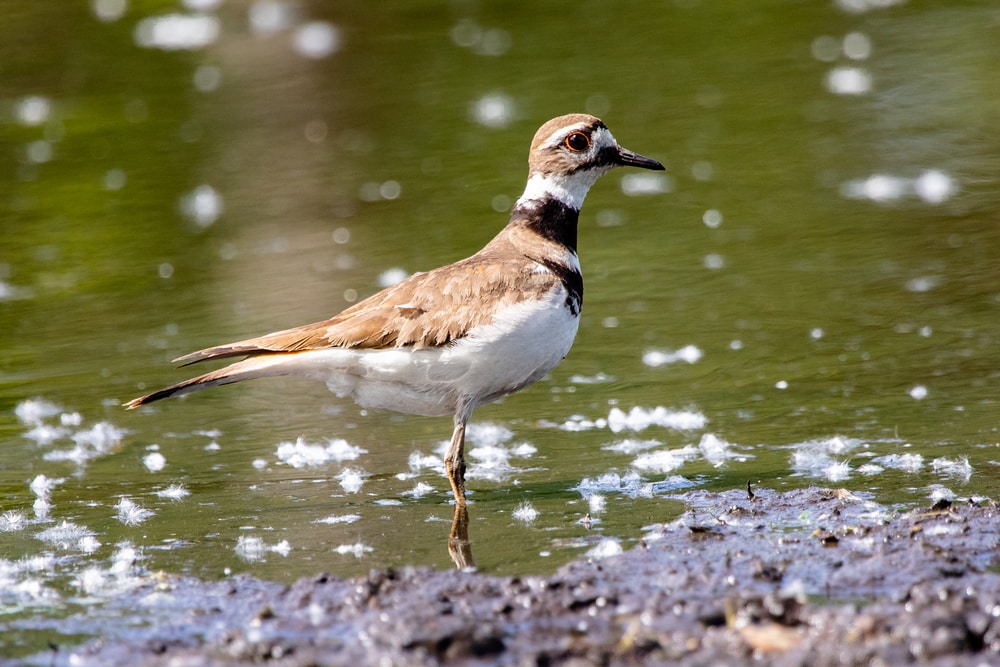
The Killdeer is the best-known shorebird in the US. This unusual species doesn’t have a strict migratory time pattern. Sometimes, it can stay in Oklahoma throughout the winter without confining to the sea or lake borders. You can notice these birds miles away from water and find nests on the high flat roofs and roadways.
Pyrrhuloxia (Cardinalis sinuatus)
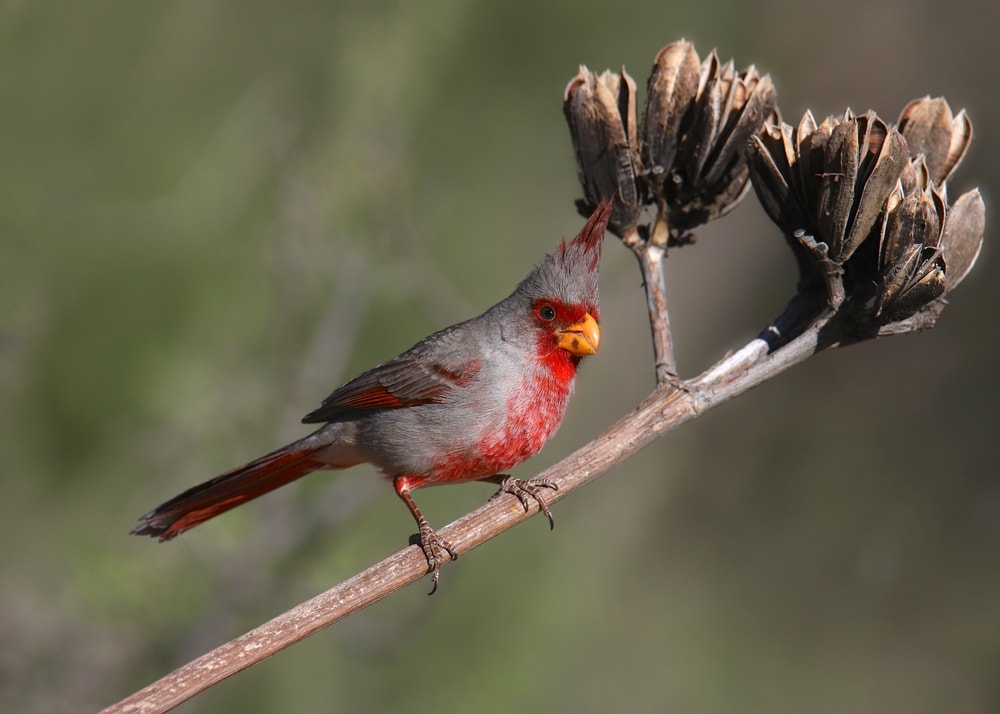
Pyrrhuloxia is a sedentary species well-known as Desert Cardinal since it prefers living in the arid southwestern US deserts. It is not a migratory bird, and you can see flocks that tend to stray and show up outside the breeding range, especially in fall and winter. Sometimes, a single bird can enjoy wandering, but it is quite rare.
Common Birds of Oklahoma
There is a list of the most common birds in Oklahoma based on Ebird recorded views data. You are more likely to see most of them on your feeders.
Northern Cardinal (Cardinalis cardinalis)
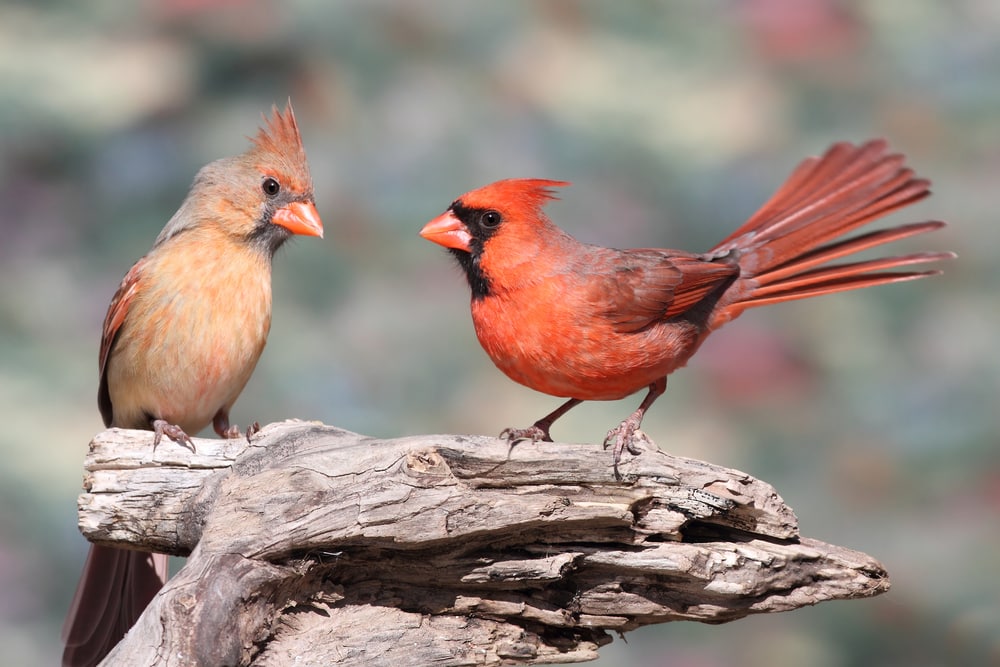
Beautifully colored Northern Cardinal with a head crest is one of the three Cardinalis species in the US. It is one of the most popular red birds in Oklahoma you can commonly see at bird feeders. The best areas to find this species year-round are oak and riparian woodlands statewide, except in Panhandlea’s west part.
Mourning Dove (Zenaida macroura)
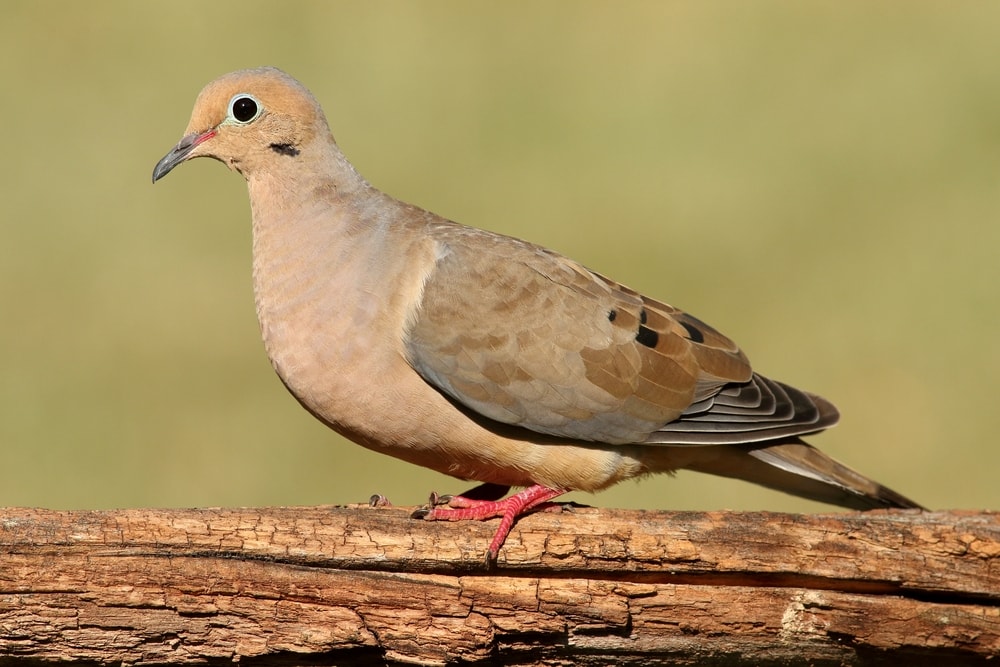
It is common to see and hear grayish Mourning Doves in Oklahoma throughout the year, but the number of this migratory species varies depending on the season. You can spot it high up in trees or on the ground while feeding since March when they come to this state to breed.
American Crow (Corvus brachyrhynchos)
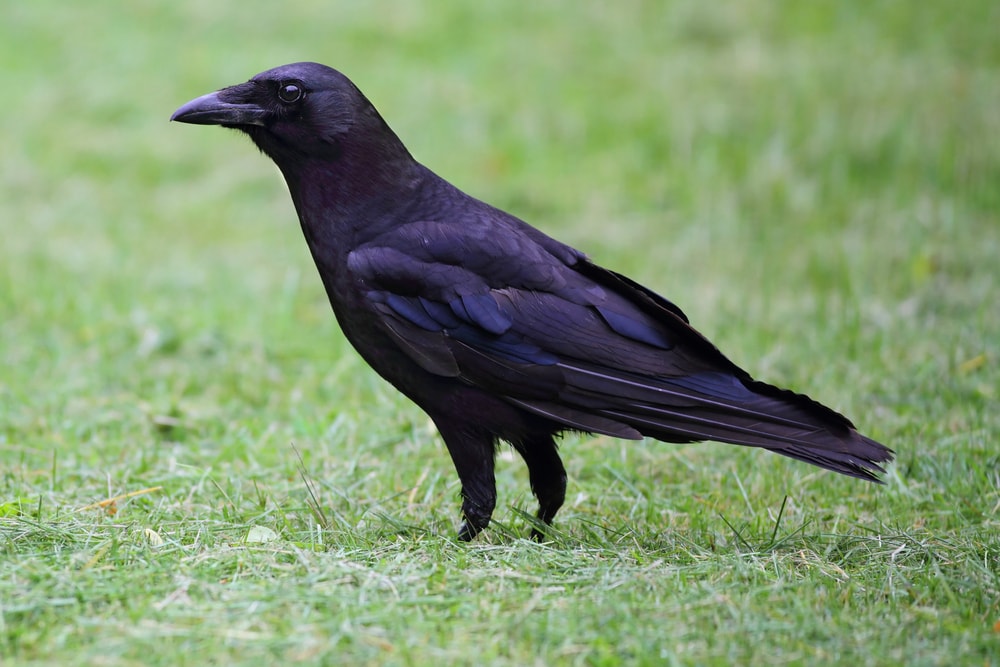
American Crow is an adaptable and common Oklahoma bird you can find in almost every habitat. This black creature prefers living in small family groups of not more than 15 members. It likes spending time in urban areas, but don’t expect this species to appear on feeders since it is too large for most models.
Blue Jay (Cyanocitta cristata)
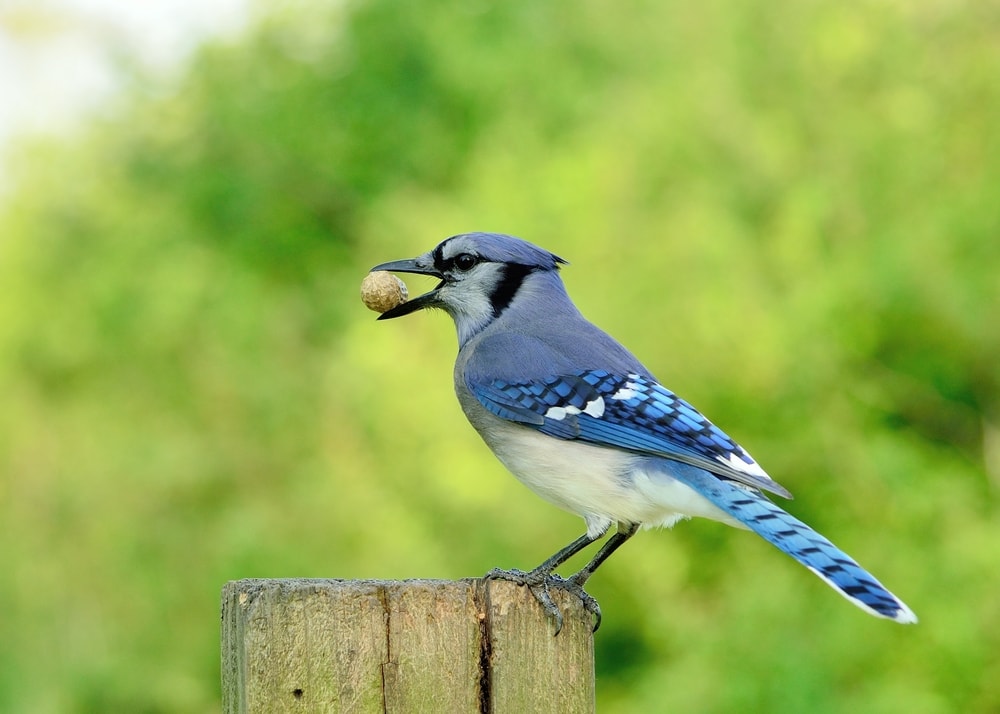
These high intelligent creatures are among the noisier types of birds in Oklahoma. You will hear it around your backyard feeder while imitating hawks. Beautiful feathers make them enjoyable to observe, so you should look for this species in both forests and residential areas. They live statewide except in the west part of the Panhandle.
European Starling (Sturnus vulgaris)
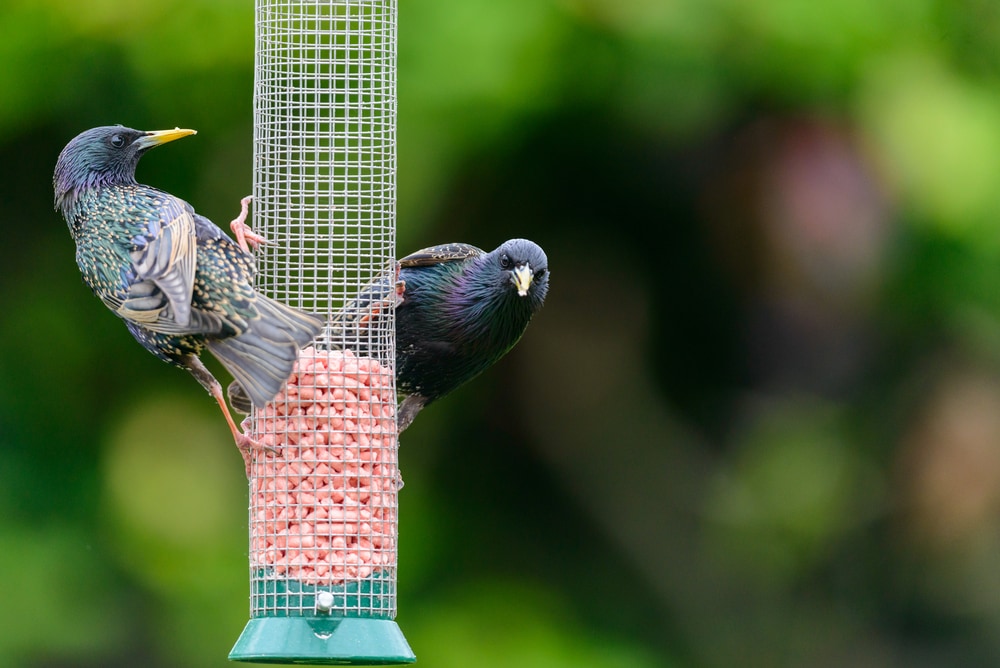
Shiny black European Starling is a common bird species in Oklahoma, but experts consider it an invasive species that chases away other birds from feeders. It came to this state after a hundred birds were released in Central Park in 1890. Unlike any other species, they have an astonishing ability to adapt to human living conditions.
Carolina Chickadee (Poecile carolinensis)
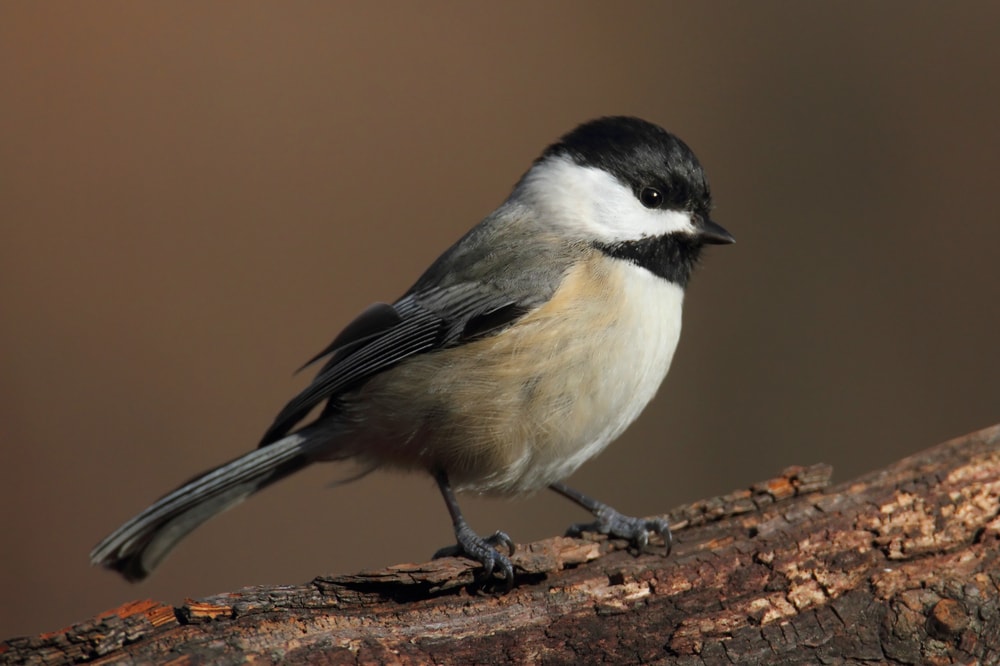
These small Oklahoma songbirds with a black cap live all over the southeastern US, even west as this state. They like nesting in well-wooded suburbs, but you can often spot this cutie in deciduous and pine forests. It is well-known as an aggressive leader of the birding community and usually attacks others near the feeders.
American Robin (Turdus migratorius)
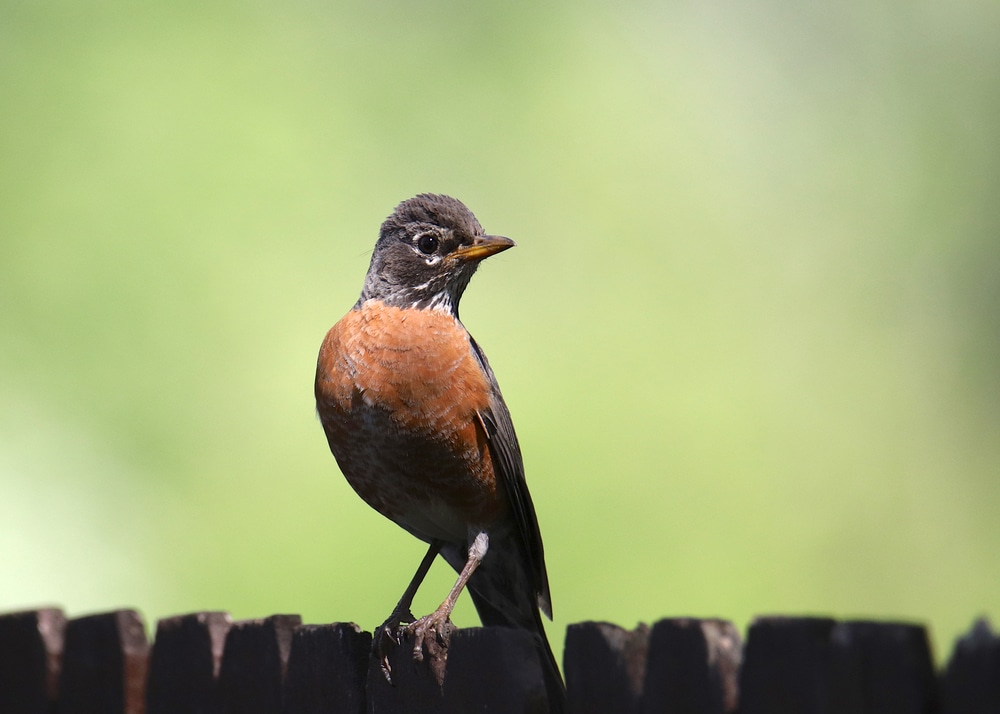
You can find American Robin in a wide range of habitats statewide throughout the year. It spends time alone or in flocks of more than 50 birds on the ground or at most 10 feet (3 m) from it. Even though it is common in urban areas, it is hard to attract it to the backyard feeder.
Northern Mockingbird (Mimus polyglottos)
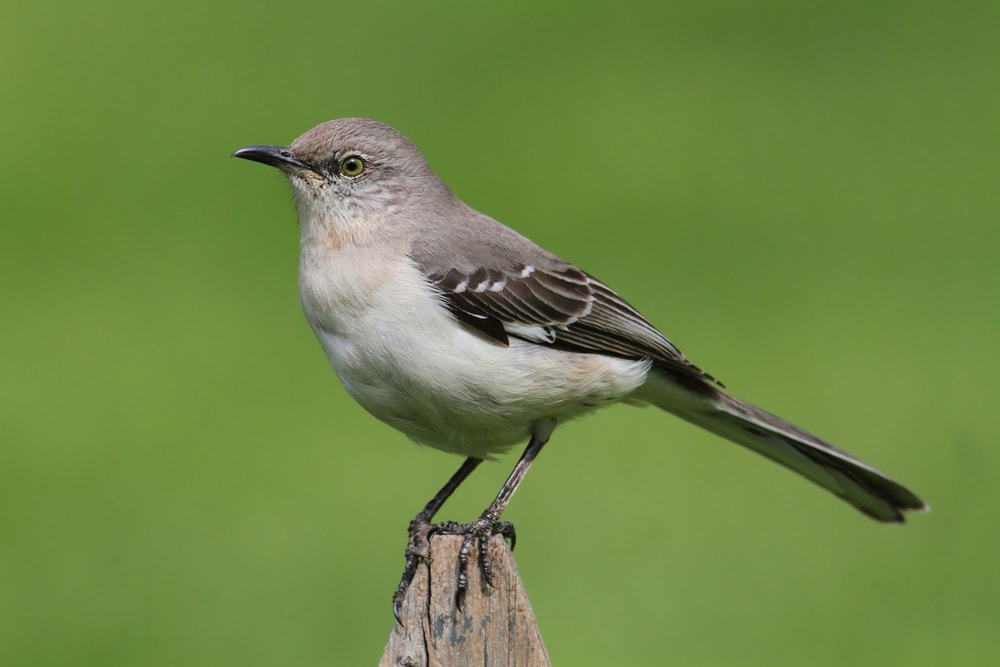
Northern Mockingbird is one of the common Oklahoma native birds that spend all year in this state. It is strongly territorial and prefers open areas near thickets. It is not rare to sport a single bird or a pair in the backyard feeder while mimicking other species’ songs, but they never form flocks.
Canada Goose (Branta canadensis)
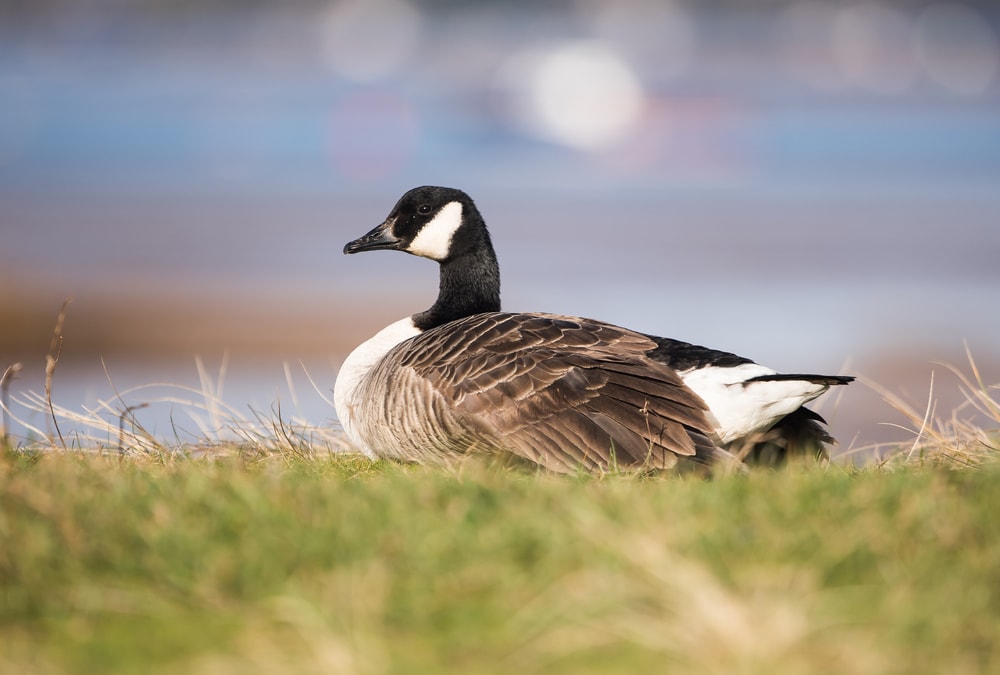
Canada goose is a large, non-migratory Oklahoma resident protected by federal and state laws. City parks, urban areas, golf courses, and recreational lakes that provide water, food, and protection attract this species throughout the year. However, feeding these birds can become a problem, which usually ends in their aggressive behavior.
House Sparrow (Passer domesticus)
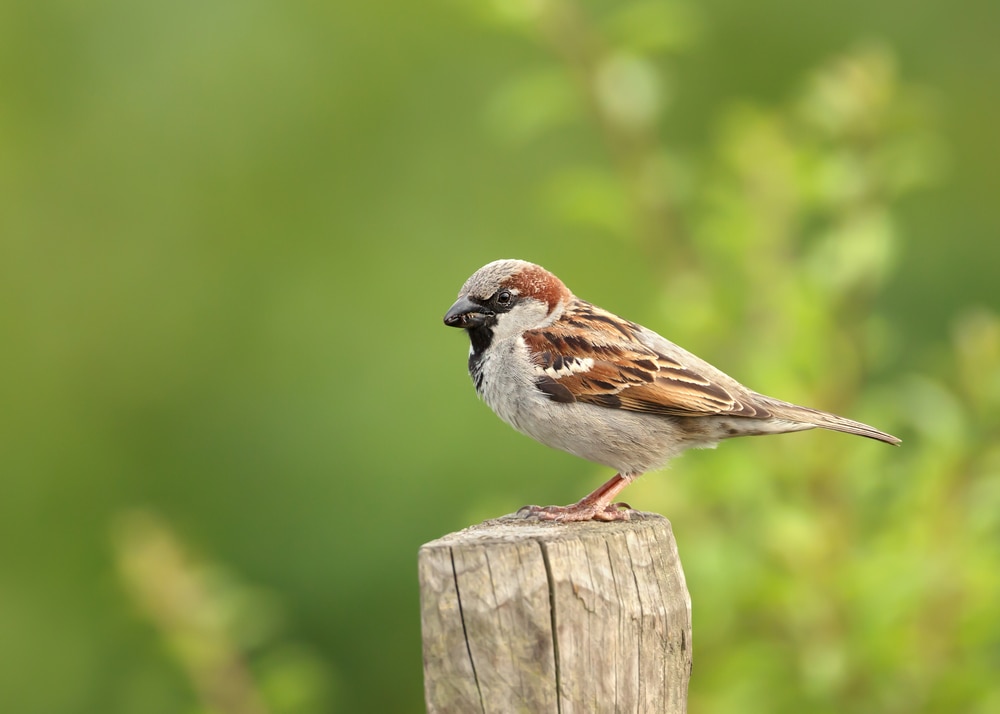
House Sparrow is one of the most invasive birds in Oklahoma, according to experts. After being introduced from the Middle East, it has become one of the most widespread species in this state. You can see this tiny invader competing for nest cavities or eating millet or cracked corn from bird feeders.
Oklahoma Landscape and Birding Seasons
Birds of Oklahoma identification is one of the primary goals for each birder coming to this prime birdwatching territory in the US that covers:
- 51 state parks
- Six national parks or protected regions
- Two national protected forests or grasslands
- Numerous wildlife preserves and conservation areas
Red Slough Wildlife Management Area in southeastern Oklahoma is the top region to find 300 species, including the rarest birds like Wood Stork, Ash-throated Flycatcher, Yellow-throated Warbler, and Fish Crow.
Tishomingo National Wildlife Refuge is a kingdom for water birds, mostly dabbling ducks, from fall to spring and wading birds from spring to fall.
Salt Plains National Wildlife Refuge, with a vast shallow lake in the center, is a perfect place for American White Pelican in fall, Sandhill Crane in winters, Bald Eagle from fall to spring, and rare migrating Whooping Crane.
The endangered Black-capped Vireo is a resident bird of Wichita Mountains Wildlife Refuge from April to August. Besides, you can also see Red-headed Woodpecker, Northern Bobwhite, and reintroduced Wild Turkey.
With nearly 500 migratory species and birds native to Oklahoma, Tallgrass Prairie Preserve is the ultimate birding spot. Greater Prairie-Chicken and Scissor-tailed Flycatcher come here in spring.
Hackberry Flat‘s wetlands attract more than 225 bird species, including 30 shorebirds. The best period for birding is from March to May, but you can spot Short-eared Owl in winter.
Oklahoma Birding Hotspots
Once you come to Oklahoma, you shouldn’t miss the most popular birding hotspots. Be sure that there are many more you can discover on your own.
Red Slough WMA
The Red Slough WMA is packed with wetlands, lakes, and forests is home to diverse Oklahoma wildlife, including 315 bird species and some really rare. Look for shorebirds living here year-round, Purple Gallinules and Tricolor Heron in summer, and Yellow Rails at the beginning of fall. Winter is a period for watching Sandhill Crane, Trumpeter Swan, Golden Eagles, and Harris’ Hawk.
Black Mesa SP
Black Mesa Preserve is the state’s high point located on Oklahoma’s Panhandle extreme west. This birders’ paradise is a home to rare birds you can’t find in the rest of the state and numerous ducks, gulls, and herons. Come here to see Golden Eagle and Pinyon Jay year-round or Cassin’s Kingbird and Mississippi Kite from spring to fall.
Tishomingo NWR
This National Wildlife Refuge near Lake Texoma is an ideal habitat for waterbirds at any time of the year. Dabbling ducks spend time here from fall to spring, while you can see migrant wading birds from spring to autumn. Step on the lookout and admire Snow geese in winter or bald eagles fishing in the open waters.
Hackberry Flat WMA
Oklahoma started with restoring this large wetland in the southwest in the 1990s. Nowadays, Hackberry Flat attracts 225 Ok bird species or tens of thousands of birds a year. Come to enjoy 30 shorebirds from March to May, dabbling ducks in February, and American White Pelican much of the year. Wading birds prefer coming here from spring through fall.
Mohawk Park – Mary K. Oxley Nature Center
With 257 different bird species, Mary K. Oxley Nature Center with the accompanying lake is a real kingdom for many state residents. It is located in the northeast of Oklahoma and represents the safe winter home for numerous migratory species that come from Canada and the northern parts of the US.
Sequoyah NWR
Located in eastern Oklahoma, this National Wildlife Refuge is home to wintering Snow Geese flocks of approximately 20,000 birds, the biggest in the state. The most desired attractions are winter waterfowl and a few Bald Eagle nests. Thousands of mallards, wood ducks, and gadwalls come here seasonally, while Least Tern nests locally on sand bars.
Mohawk Park – Lake Yahola
Lake Yahola, located near Tulsa and Mohawk Park, is a popular spot for birdwatching. You can see 254 bird species there, including shorebirds, wintering waterfowl, beautiful songbirds like Killdeer, and rarities like Long-tailed Duck, Franklin’s Gull, and Bonaparte’s Gull. Come here from fall to spring to see American White Pelican.
Salt Plains NWR
With a huge shallow salt lake in north-central Oklahoma, Salt Plains is an ideal habitat for American White Pelican flocks passing through in spring and autumn. You can see Bald Eagle from fall to spring and waterfowl flocks in winter. There are also birds nesting here like Wild Turkey, Greater Roadrunner, and Scissor-tailed Flycatcher.
Lake Hefner
Local Oklahoma City birders often come to Lake Hefner while looking for waterfowl, grebes, and shorebirds, including many rare species. Almost every duck living in the Midwest comes here at some point. You can occasionally spot oddities, such as Surf Scoter and Cinnamon Teal, and regular guests like American White Pelican in spring.
Boomer Lake Park
Boomer Lake Park in Payne County, located on the Oklahoma north, is the right place to visit if you enjoy watching rare birds. You can see Northern Flicker, Juncos, Harris’s Sparrow, and American Goldfinch. However, this place is an ideal home for an increasing number of Canada Geese as well as duck and hawk flocks.
Oklahoma Field Guides
No matter if you have already installed apps on your smartphone, you will need a physical field guide once you go birding. It is a cheap but helpful solution, especially in sparsely populated areas with a weak signal. The only thing to do is find the most attractive birds of Oklahoma book full of information and enjoy.
Birds of Oklahoma Field Guide

Stan Tekiela gave his best to write these birds of Oklahoma field guide that will make bird watching a pleasurable experience. Take this informative book with you when deciding to look for any of the 115 described bird species living here. Since they are organized by color, you can quickly find and learn to identify them.
Oklahoma Winter Bird Atlas

This beautifully illustrated atlas written by Dan L. Reinking offers both ornithologists and novices plenty of easy-to-read information about winter Oklahoma birds. The book includes color photographs of 250 bird species, graphs, tables, and useful maps. Plus, you can find a brief description of the time of year when a particular bird appears in this state.
Midwestern Birds: Backyard Guide

This convenient Bill Thompson’s guidebook describes 55 of the most common backyard birds you can see anywhere in the Midwest, including Oklahoma. This fantastic book includes large color photos, detailed bird descriptions and bird calls, and nesting information. You can also find information about bird watching essential gear and observational techniques.
Oklahoma Bird Checklist
According to the latest data, there are 487 bird species in this state. If you live here or come to the Sooner State to enjoy incredible wildlife, you should take this handy Oklahoma bird checklist and start birding. You can also download the full list of birds available at Avibase, including birding and accidental species.
Download FREE Oklahoma Bird Checklist PDF
Click here for an overview of Oklahoma Birds
Specific Bird Species
Here are the most common bird species documented in Oklahoma. This US state ranks far above the average for the number of birds hosted year-round.
Finches in Oklahoma
Finches are known for bouncing flight that includes alternately gliding on closed wings and flapping. Small American Goldfinches are beautiful yellow birds in Oklahoma. Their flocks are often guests in woodland edges, but you can see them in parks and gardens statewide in winter. House Finch has appeared in Oklahoma recently, while Purple Finch is an occasional visitor.
Eagles in Oklahoma
You can find two species of these powerful Oklahoma birds of prey. The Bald Eagle is a recognizable American symbol worldwide, and you can find it across Oklahoma, especially around lakes, marshes, and rivers. If you want to see Golden Eagle, you should visit Black Mesa State Park and Nature Preserve in the Panhandle in winter.
Owls in Oklahoma
You can find nine species of these solitary nocturnal predators in Oklahoma, including curious Barred Owl and fake-ear-tufted Eastern Screech-owl. The most common are the highly habitat-adaptable Great Horned Owl and American Barn Owl. On the other hand, Short-eared Owl and Snowy Owl, one of the most beautiful birds worldwide, only spend winters here.
Ducks in Oklahoma
Ducks are among the most numerous Oklahoma water birds. You can see many ducks and geese migrating from the Prairie Pothole Region that spend winters here. The most gorgeous is the male Wood Duck that is considered the most beautiful duck worldwide, and Ruddy Duck, a diving species with a striking blue bill.
Bluebirds in Oklahoma
This beautiful blue songbird lives in edge areas between prairie and forests. It prefers nesting in dying trees and often uses abandoned woodpecker nests instead of making its own. You can quickly attract this bird to come to your feeder by offering insects and fruit mix they like the most.
Hawks of Oklahoma
Surprisingly, you can find ten different hawks living in Oklahoma in all sorts of habitats. Red-tailed Hawk is the most common, and you can see it almost everywhere. Sharp-shinned Hawk is the smallest hawk in this state, and it is not rare to see it near bird feeders while migrating Swainsony Hawk comes here in spring and summer.
Hummingbirds in Oklahoma
Hummingbirds are the smallest and most weird birds in Oklahoma. You can enjoy nine different types hovering and flying upside down or backward. Neotropical migrant Ruby-throated Hummingbird is the most numerous in summer when you can attract it with a sugar-water feeder. Rufous Hummingbird is rarely seen, mostly in gardens during winter.
Woodpeckers in Oklahoma
Eleven woodpecker species take advantage of excellent location and mild climate to thrive. Most of them enjoy attractive dead trees with a swarm of insects inside or visit bird feeders. You can see Red-headed Woodpecker living in swamps and pine savannas year-round and Red-bellied Woodpecker coming here in spring and summer.
Falcons in Oklahoma
Wherever you come to this state, you can see any of the four falcon types living here. Take an excellent Oklahoma bird guide to help you recognize them. Enjoy the flight of Gyrfalcon, the largest falcon species, and American Kestrel, a small but accomplished hunter that casually uses human-made nest boxes to nest.
Doves in Oklahoma
There are five dove species in Oklahoma, including Mourning Doves, unavoidable beauties of Oklahoma. About 400 million of these US native birds nest in all states, which is the only case in the bird world. Doves quickly adapt to most habitats, and you can find them living in woods, savannas, parks, farms, grasslands, and even deserts.
FAQ
What kind of birds live in Oklahoma?
With 487 resident and migratory bird species, Oklahoma is a home for more than half of approximately 800 bird species living in North America year-round.
What are the black birds in Oklahoma?
Red-winged Blackbird is the most popular among black birds in Oklahoma, but you can also spot the Black Rail, Black Tern, Black Skimmer, Black Vulture, and a few accidental species.
How many species of birds are in Oklahoma?
According to Avibase, the official list of birds living worldwide, you could find 487 Oklahoma bird species in 2022, including 106 accidentals, six introduced, and two extinct.
Are there Whippoorwills in Oklahoma?
Whippoorwills are nocturnal birds that nest on the ground and are quite rare in Oklahoma because their number decreases due to disturbed habitat or its lack.
Are there Blue Jays in Oklahoma?
Yes, you can find Blue jays in all Oklahoma oak, pine, and hickory forests and urban and residential areas statewide except in the western part of the Panhandle.
Are there falcons in Oklahoma?
Falcons are one of the fast Oklahoma raptors, and you can find four species, including superfast Peregrine Falcon, small American Kestrel, unpredictable Merlin, and magnificent Prairie Falcon.
Are there eagles in Oklahoma?
A few hundred Bald Eagles are resident birds in Oklahoma during the summer, but you can also see Golden Eagle in this state from time to time.
Are there Magpies in Oklahoma?
Black-billed Magpie (American magpie) is a common bird species you can see in the Oklahoma Panhandle, preferably at open habitats with a lot of trees.

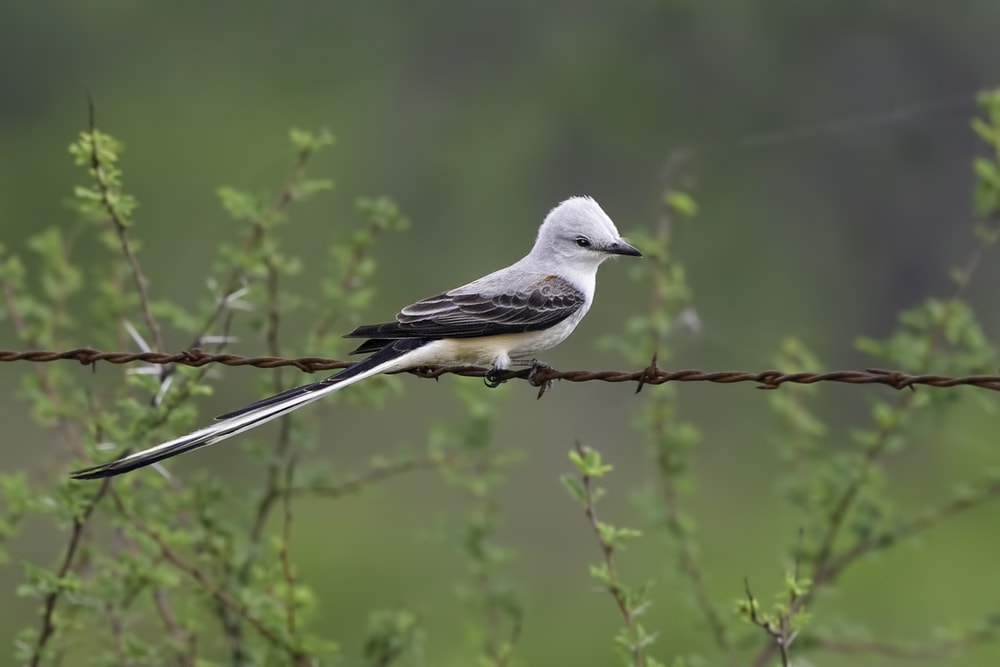
Your website is magnificent! Thank you for sharing! Someone told us the majority of song birds in Oklahoma had died inexplicably this year. Salmonella and another disease were cited. Have you found that to be true? We have not heard any song birds in our area at Oologah lake since our friend told us. I was wondering if the heat and lack of rain the past month had caused them to be elsewhere?
Thank you,
Gayle in Oologah